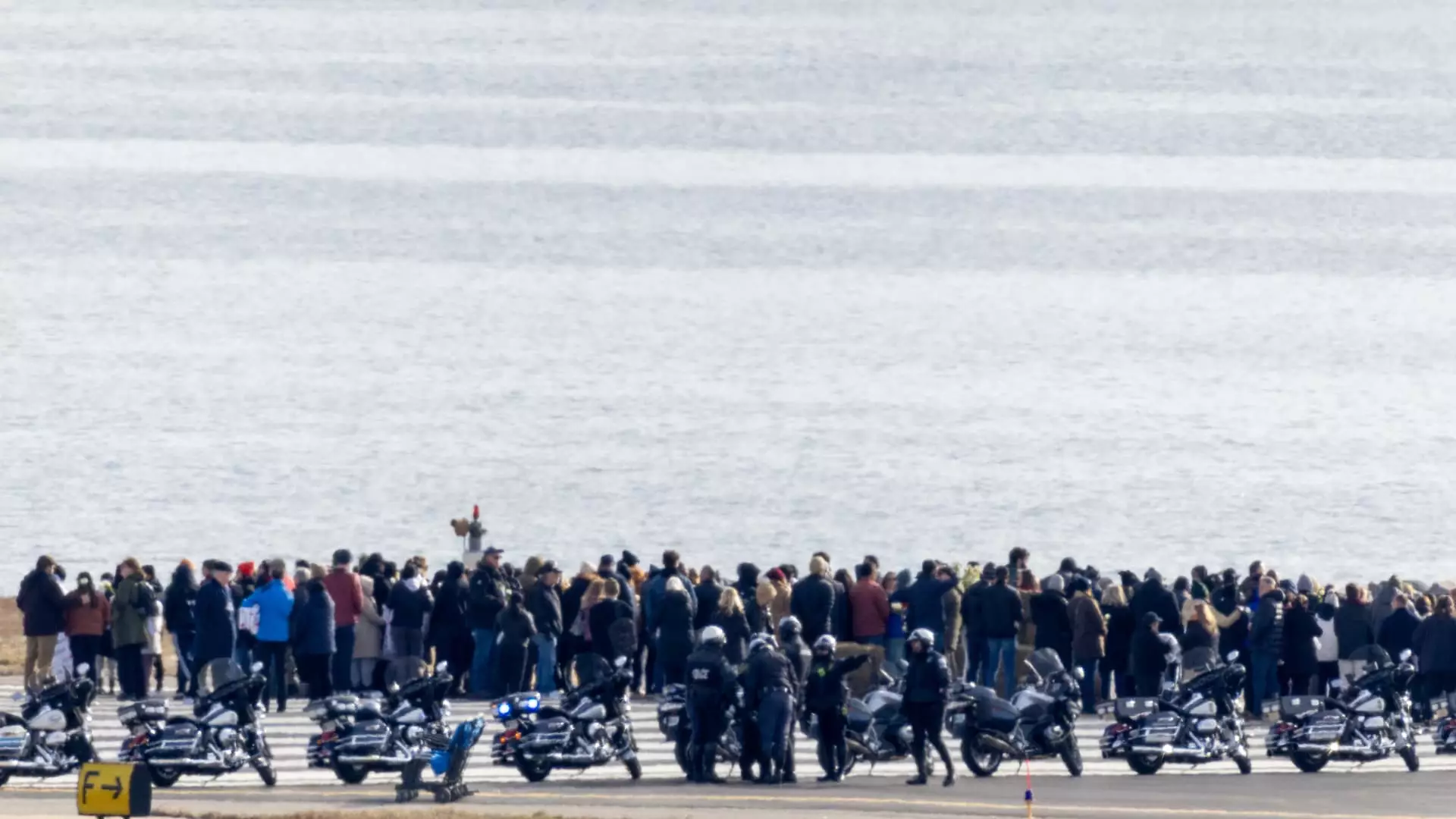On a harrowing Wednesday, a collision between an American Airlines regional jet and an Army Black Hawk helicopter claimed the lives of 67 individuals over the Potomac River. Authorities have confirmed that the remains of all 67 victims have been recovered, with 66 identities already verified. This incident, categorized as the deadliest air crash in the United States since 2001, marks a significant and tragic moment in aviation history, especially as it comes nearly 16 years after the last major airline crash that resulted in fatalities. The entire nation is left grappling with the aftermath of this catastrophe, as investigations delve deeper into the circumstances surrounding the tragic event.
The American Airlines Flight 5342, operated by PSA Airlines, was mere moments away from landing at Washington D.C.’s Reagan National Airport when the accident occurred. Authorities revealed that the Black Hawk was reportedly flying at approximately 300 feet, exceeding the Federal Aviation Administration (FAA) regulations, which dictate that helicopters must remain below an altitude of 200 feet in that particular flight area. Although initial data gathered from the air traffic control tower paint a picture of a regulatory breach, officials from the National Transportation Safety Board (NTSB) are cautious to draw conclusions without gathering additional evidence, particularly from the data recorders once they are recovered from the water.
In the wake of the tragedy, emergency services have been engaged in extensive recovery efforts. Crews have meticulously worked to recover parts of the Bombardier CRJ-700 jet, including the right wing, tail cone, and sections of the fuselage along with the cabin. The complexity of this undertaking is magnified by the nature of the crash site, located over water, which comes with its unique challenges.
While the recovery teams have made significant progress, the need for thorough investigation remains paramount. The NTSB has interviewed air traffic controllers present during the incident and is in the process of synchronizing the data from both aircraft to piece together the chronological events that led to the collision. These findings are crucial as they will help determine not only the cause but potentially lead to measures aimed at preventing such catastrophes in the future.
In light of these events, American Airlines is taking significant steps to support its employees and the families affected by the tragedy. CEO Robert Isom communicated his unwavering commitment to those impacted by the crash, announcing a moment of silence to honor the victims. American Airlines operates a specialized CARE Team, consisting of around 2,000 volunteer employees trained to assist families in the aftermath of such calamities. Their responsibilities extend beyond providing emotional support; the team also coordinates logistical needs such as travel arrangements, as well as offering necessary resources to the families of victims.
The involvement of American Airlines’ leadership, including COO David Seymour, emphasizes the company’s dedication to maintaining a compassionate presence during such challenging times. They are in Washington D.C. this week, reinforcing the support network established to manage the fallout from the disaster.
As investigations continue, the FAA has imposed indefinite restrictions preventing helicopters from operating near the airport in an effort to ensure safety and avoid similar incidents in the future. The incident raises important questions about air traffic regulation compliance and the safeguards necessary to protect both civilian and military flights in shared airspace.
The tragic events over the Potomac River serve as a stark reminder of the fragility of air travel and the life-altering consequences of aviation accidents. As the community mourns the loss of 67 lives, the work of investigators and support teams will be critical in uncovering the truth behind the collision and fostering a pathway toward enhanced safety in aviation practices. This incident will leave a lasting impact, prompting a reevaluation of air traffic regulations and recovery response strategies in hopes of preventing future tragedies.


Leave a Reply